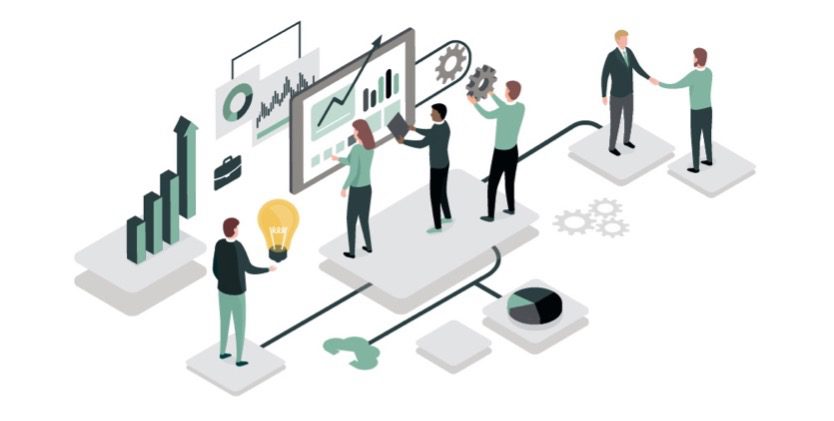Extending Your Financial and Disclosure Reporting of the Close
Blog post
Share
CadencyDirect® by Trintech on the Now Platform® Automatically Updates Financial Disclosure and Reporting Teams when Changes are Needed
The drive to financial transformation continues to accelerate as we speed into the current decade. Few CFOs will deny the vast benefits of a more efficient and highly automated financial close process. The outcome of which is the generation of faster and more accurate financial reports, including disclosure reporting – critical to a business’s success and risk management framework.
But achieving this transformed Record to Report (R2R) operational state has consistently been challenged by siloed data and people, creating a financial close period that Sophie Johnson of Spendesk refers to as dreaded and “miserable.” But why? It comes down to data, people, and the little details.
“It is not unusual for finance to spend 90% of its time getting information into relevant business systems, validating it, and getting it out again for reporting…” – Declan Tyrrell, Oracle
Declan Tyrrell of Oracle notes the criticality of automation in the Record to Report process, but also the intensive time the Office of Finance continues to spend simply managing data and getting it out for reporting. Considering that the automation technology available to the Office of Finance is stronger than ever, and with the whole of executive leadership throwing full support behind enterprise-level efficiency through technology, why is implementation perceived as such a headache?

What began as a banner call heralding digital transformation at the enterprise level has seen financial transformation set against an enterprise process which is limited by the very nature of the data and personnel involved. Financial technology has always been specialized, as it has been tailored to the Office of Finance — which has unique processes and needs born of intensive compliance, financial dislosure regulations, and reporting mandates. Data integrity and a proper system of controls live in the heart of financial close, and any technology that moves for financial efficiency integrated to the larger enterprise must retain those factors.
The Larger Business Problem With Historical Disclosure Reporting Processes
Deloitte notes lack of automation, lack of access to real-time notification and data, and manual generation of financial statements as three of the top five signs of a “broken” financial close process.
But all three, at their core, play host to the same problems that keep automation from taking hold properly in Financial Close: the Office of Finance and its data – both inflow and outbound – are siloed from the rest of the organization.
The Office of Finance requires a solution that:
- Is tailored to financial processing
- Maintains a strict system of controls for security
- Provides untarnished and comprehensive audit traceability
But when activities occur in the financial close that affect the preparation of reports or disclosure reporting, what does the process look like for getting those updates made, today? What if a previously generated report or disclosure is affected by an unexpected balance sheet adjustment or control failure?
While the Office of Finance is responsible for the period close, the completed set of close tasks for the period is also a critical milestone for the Financial Disclosure & Reporting (D&R) team — which often sits outside of the direct Office of Finance in large enterprises. In addition to gathering financial data from various sources, the D&R team uses a successful period-end financial close as the watermark to begin their work, or to update prior work when things have changed. In other words, the Office of Finance’s activities directly affect the efficiency of the D&R team.
When the close period has ended, and the close process is complete, many D&R teams rely on outdated, manual methods to generate their reports – such as email – which can cause critical delay to time-sensitive reports and disclosures, as it retains a large component of human error in the process. Worse yet, when a change or problem occurs in the financial close that necessitates immediate update to disclosures or previously compiled reports, this manual communication method bears even greater risk to the company.
Fixing Common Disclosure Reporting Issues with CadencyDirect
CadencyDirect by Trintech (available on the ServiceNow® platform) leverages the power of ServiceNow to link the account reconciliation process to the broader enterprise; where teams like Disclosure & Reporting can make use of automated workflows based on updates in the financial close process, whether those workflows are single-task events, or multi-stage and complex efforts that involve multiple teams.
Close tasks and close issues noted in CadencyDirect’s System of Accounting Intelligence™ by Office of Finance users can directly trigger D&R workflows within ServiceNow.

For example, a balance sheet update has occurred for the prior period, which the processor notes with the creation of a Close Issue Action Plan in CadencyDirect. While the Office of Finance works through that action plan and its steps, ServiceNow immediately registers the specific Issue Action Plan creation in real-time, and automatically creates a workflow notification to D&R to pause all work on current reports for that period, or to recall prior published reports for update.
Within the Now Platform®, CadencyDirect drives best-practice processes for managing your financial close tasks in a standardized methodology that is shared across all other departments in the enterprise that also leverage ServiceNow® for workflows. Applying those same controls in the same way to generated, close-related tasks not only ensures real-time, automated communication of relevant data, but retains the system of controls and tailored functionality that is essential for the Office of Finance.
[cta-content-placement]
As the only native Built on Now® app built specifically for the Office of Finance, CadencyDirect enables ServiceNow® customers to leverage the same process management capabilities they’ve come to trust in the industry-leader for workflow. With CadencyDirect on the Now Platform®, your company can achieve the increased efficiency, reduced cost, and reduced risk of a true enterprise-level automated financial close solution.
 Written by:
Written by:
Christopher Witt
Director of Product Management for CadencyDirect

